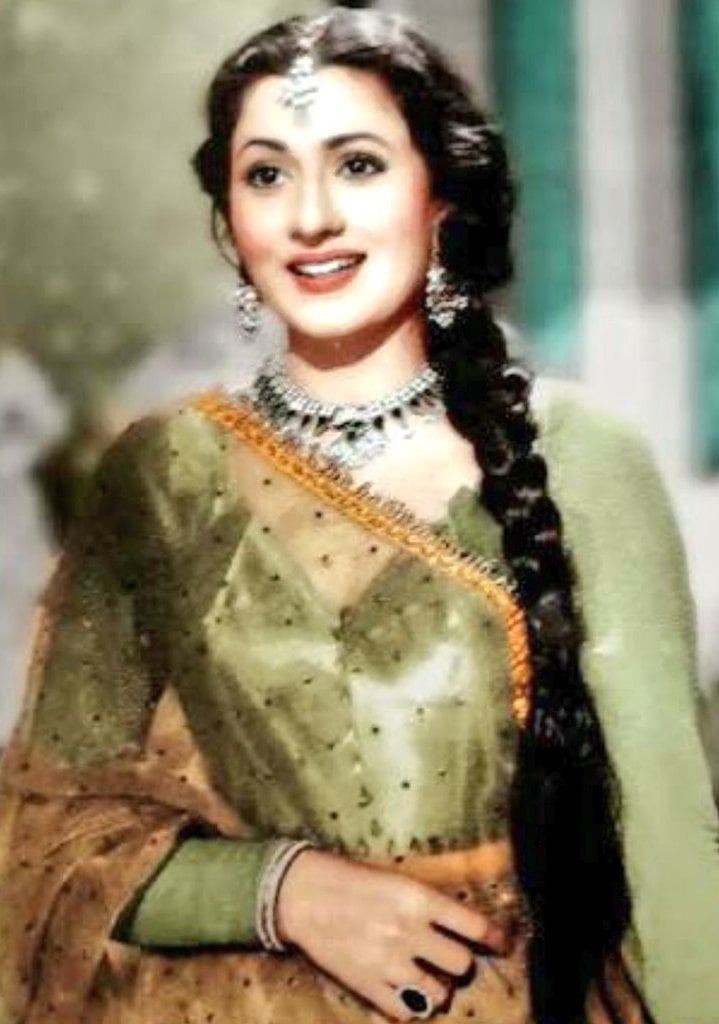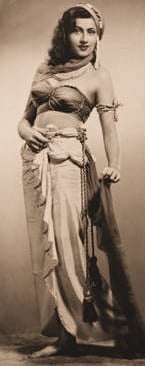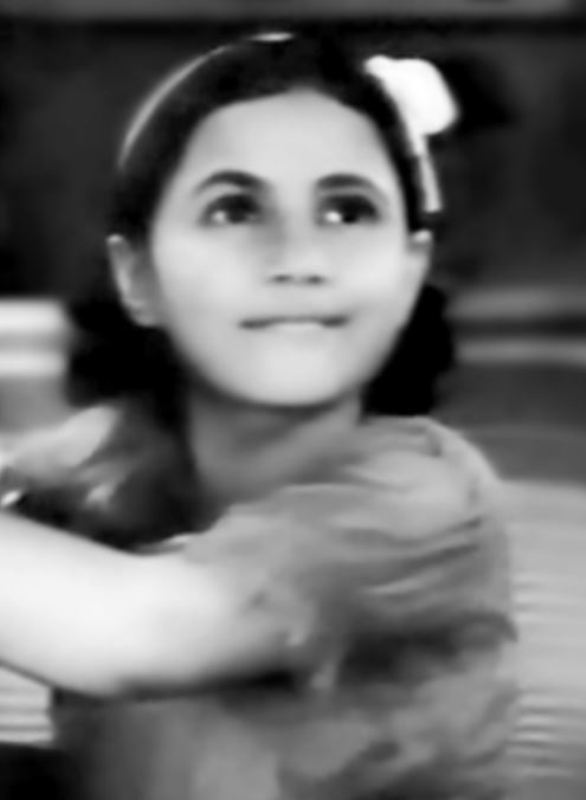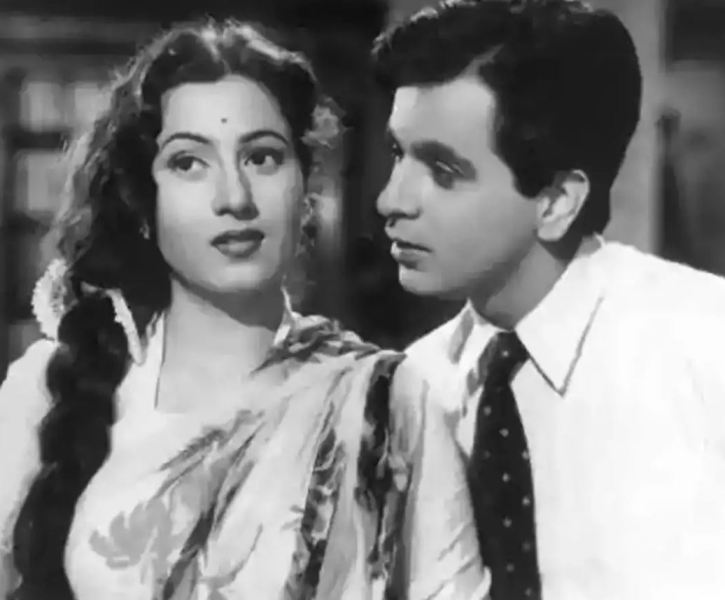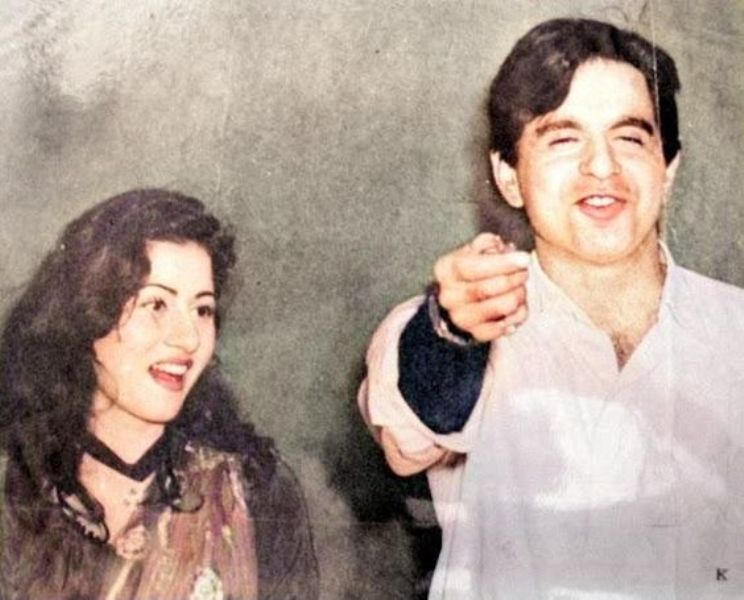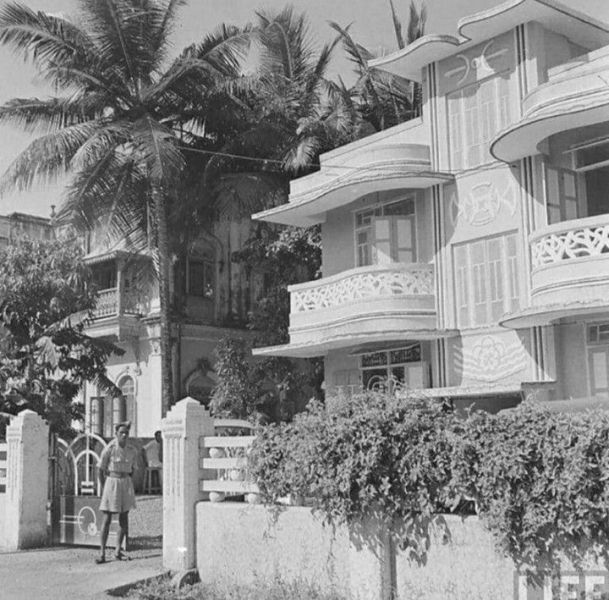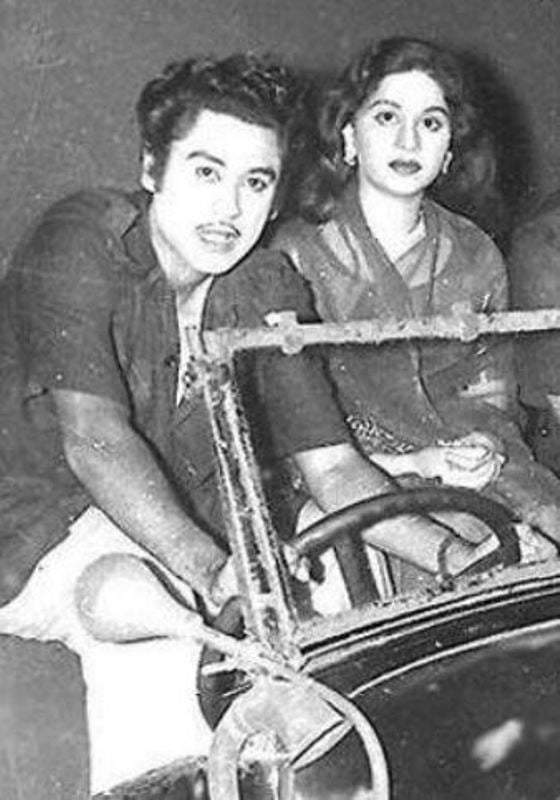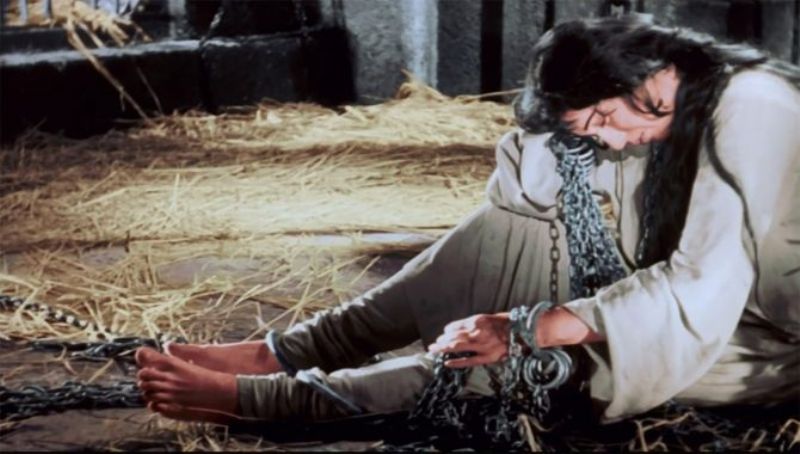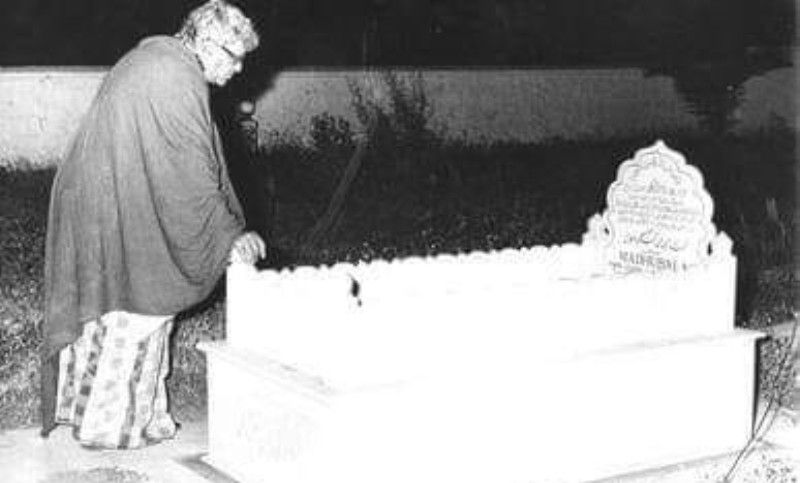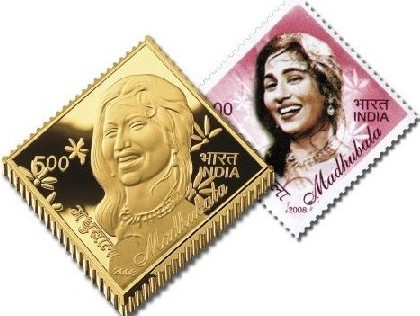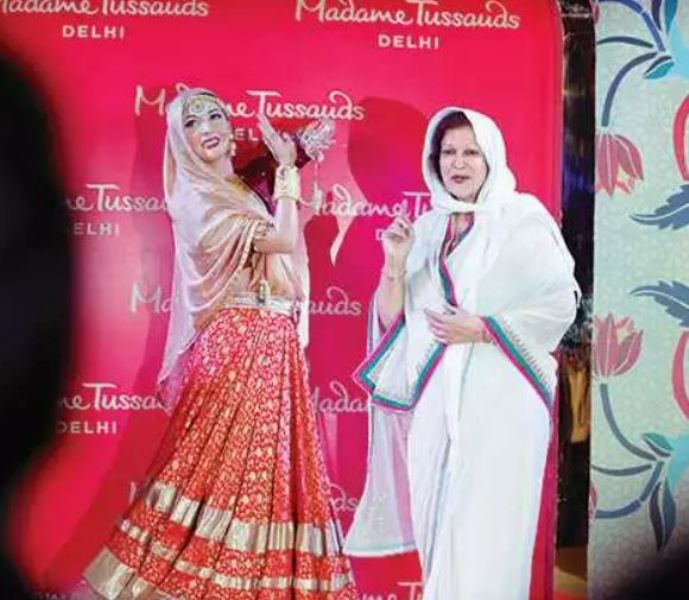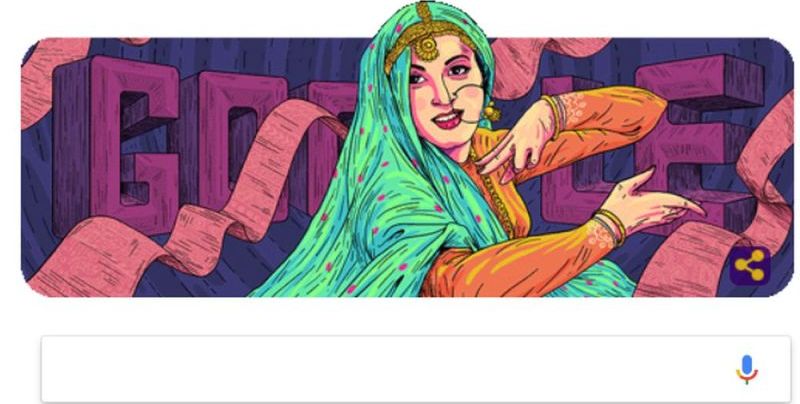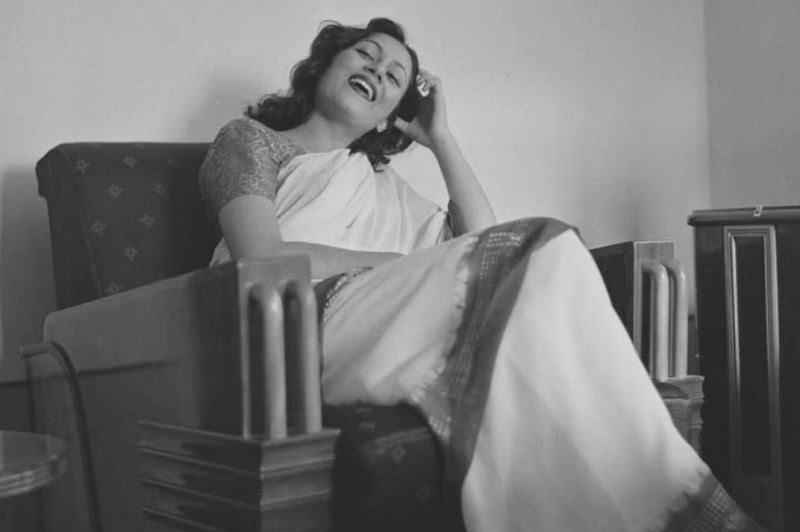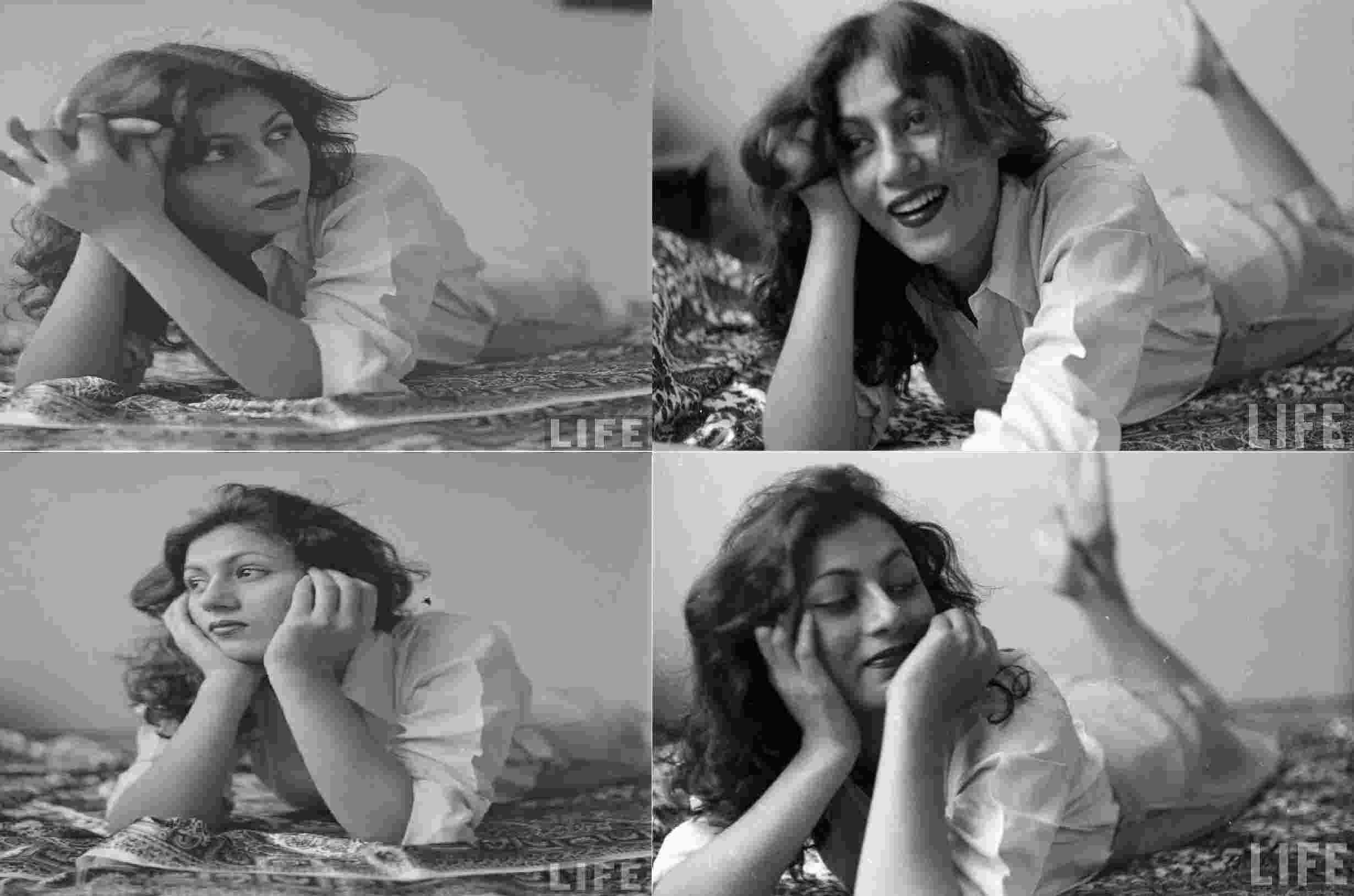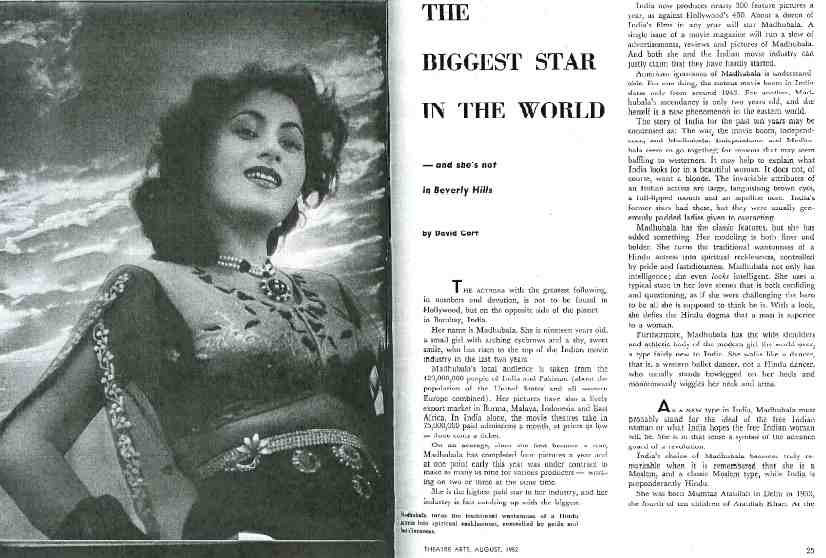Madhubala Age, Death, Husband, Family, Biography & More
| Bio/Wiki | |
|---|---|
| Real name | Begum Mumtaz Jehan Dehlavi |
| Names earned | • The Venus of Indian Cinema • The Marilyn Monroe of Bollywood • The Beauty With Tragedy |
| Profession(s) | • Actor • Producer |
| Physical Stats & More | |
| Height (approx.) | in centimeters- 170 cm in meters- 1.70 m in feet & inches- 5’ 7” |
| Weight (approx.) | in kilograms- 55 kg in pounds- 121 lbs |
| Figure Measurements (approx.) | 34-26-30 |
| Eye Colour | Black |
| Hair Colour | Black |
| Career | |
| Debut | As an actor • Film: Basant (1942) as 'Manju' (child actor) 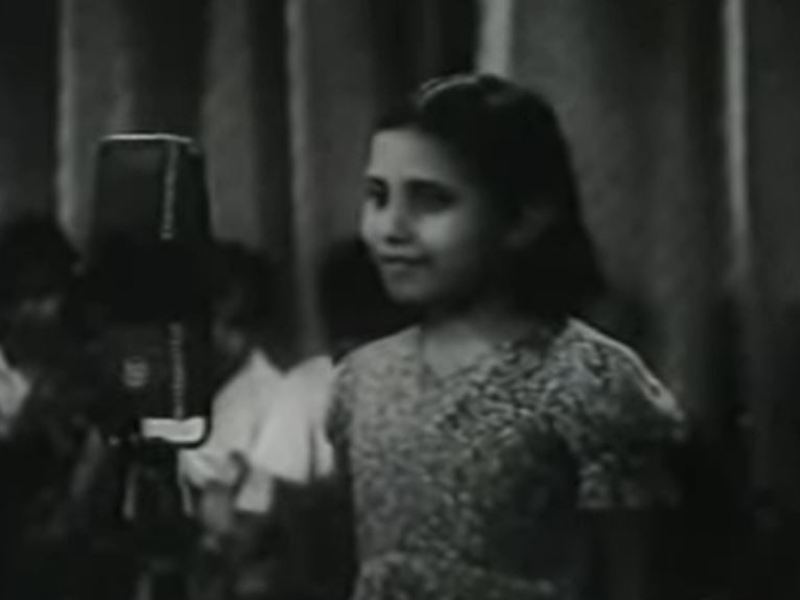 As a producer • Film: Naata (1955) 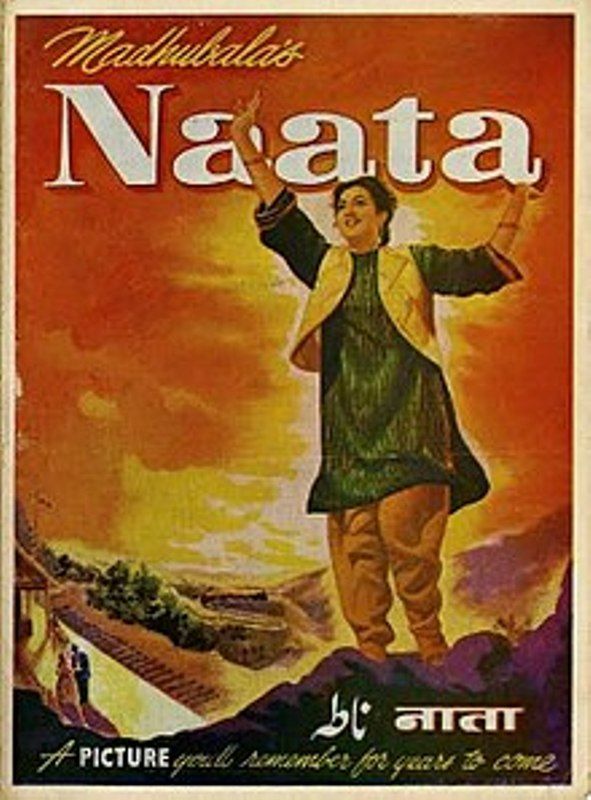 |
| Last Film | Sharabi (1964) |
| Personal Life | |
| Date of Birth | 14 February 1933 (Tuesday) |
| Birthplace | Delhi, British India |
| Date of Death | 23 February 1969 |
| Place of Death | Bombay (now Mumbai), Maharashtra, India |
| Age (at the time of death) | 36 Years |
| Death Cause | Ventricular Septal Defect (VSD) (Hole in the Heart) |
| Zodiac sign | Aquarius |
| Nationality | • British Indian (1933-1947) • Indian (1947-1969) |
| Hometown | Delhi, India |
| School | Madhubala did not attend any school, but she was taught at home by an English tutor. |
| Religion | Islam |
| Controversies | Charity Sparks Religious Backlash Reportedly, in 1950, Madhubala donated Rs. 5000 each to the Jammu and Kashmir relief fund and children suffering from poliomyelitis. She further donated an amount of Rs. 50,000 to the refugees from East Bengal. She received wide media coverage for the donations but faced criticism due to different religious beliefs. Received a Lawsuit Over an Advance Payment When Madhubala's father, Ataullah Khan, denied her outdoor shooting with Dilip Kumar in Bhopal for the film 'Naya Daur'(1957), B.R. Chopra sued her for the advanced money that she received for this movie. Dilip Kumar also testified against Madhubala and her father in the court in favour of Chopra. |
| Relationships & More | |
| Marital Status (at the time of death) | Married |
| Affairs/Boyfriends | • Prem Nath • Dilip Kumar • Kishore Kumar |
| Marriage Date | Year, 1960 |
| Family | |
| Husband/Spouse | Kishore Kumar |
| Children | Madhubala had no children. |
| Parents | Father- Ataullah Khan (worked with 'Imperial Tobacco Company' in Peshawar) Mother- Ayesha Begum |
| Siblings | Brother- None Sister- 7 • Altaf • Chanchal • Kaneez Fatema • Shahida Kazi 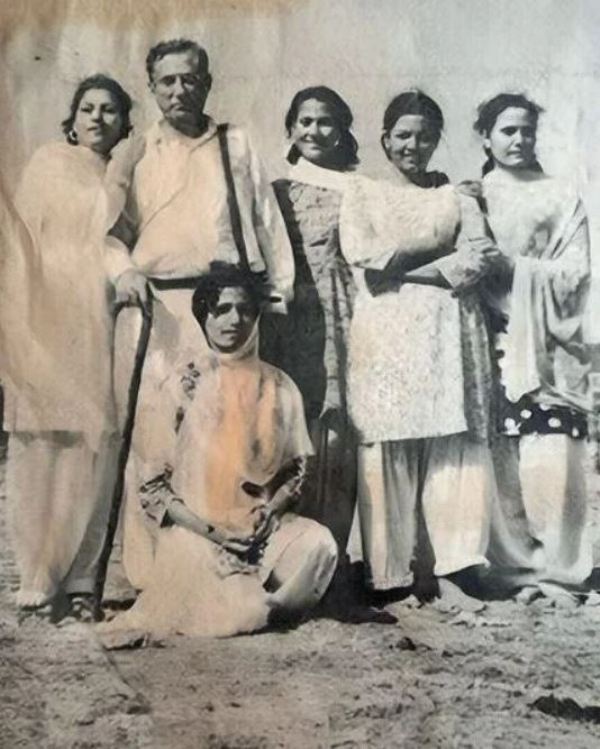 • Madhur Bhushan (Zahida) 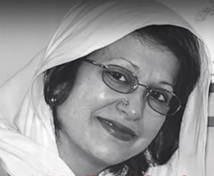 Note: According to sources, Madhubala's parents had 11 children, four boys and seven girls; however, the boys couldn't survive. [1]Filmfare |
| Favourites | |
| Food | Chaat, Ragda Pattice, Pani Puri |
| Dessert | Kulfi |
| Jewellery | Gold and Kundan |
| Song | ‘Rulake Gaya Sapna Mera’ from the film “Jewel Thief” (1967) |
| Style Quotient | |
| Car Collection | Madhubala's impressive car collection included a Hillman, Buick, and Station Wagon, among other swanky cars. [2]Filmfare |
Some Lesser Known Facts About Madhubala
- Madhubala was an Indian actor and producer who worked in Hindi cinema. Her captivating natural beauty and elegant demeanour have made her a popular icon among viewers. Madhubala garnered appreciation from the audiences for her work in films like ‘Neel Kamal’ (1947), ‘Amar Prem’ (1948), ‘Chalti Ka Naam Gaadi’ (1958), ‘Half Ticket’ (1962), and many more. She died of congenital heart disease in 1969.
- Reportedly, Madhubala did not attend any school, but she was taught by an English tutor at home. [4]Filmfare
- In an interview, Madhubala’s sister Madhu revealed that Madhubala, along with her family, shifted to Bombay (now Mumbai) when her father, Ataullah Khan, lost his job at Imperial Tobacco Company in Delhi. Madhubala and her family resided in the Kandivali/Malad suburb, which was in close proximity to Bombay Talkies, a movie studio. On 14 April 1944, they lost their house in the explosion at the Victoria Dock of Bombay, British India.
- In 1942, Madhubala, at the age of 9, made her debut as an actor in the pre-partition Indian romantic musical film ‘Basant,’ which went on to become the highest-grossing Indian film of that year; Madhubala played the role of ‘Manju’ in the film. She was first signed as the main lead in the film ‘Neel Kamal’ (1947).
- Reportedly, on the sets of ‘Basant’ (1942), Devika Rani, the producer of the film, was grasped by Madhubala’s translucent beauty, and she asked her to keep ‘Madhubala’ as her stage name.
- Following the success of the song ‘Aayega Aanewala’ from the film ‘Mahal’ (1949), Madhubala began including a clause in her contracts that specified Lata Mangeshkar as her preferred playback singer. In discussing Madhubala’s admiration for her, Mangeshkar remarked,
She stipulated in her contracts that she wanted only me to do her playback singing. This was after the success of Aayega Aanewala in Mahal (1949). During those days, we’d meet socially quite often. That kind of camaraderie no longer exists… Madhubala mujhe bahut pyar se milti thi (She would meet me with a lot of affection).” [5]The Indian Express
- Madhubala appeared in the film ‘Hanste Aansoo’ (1950), which was the first film to receive an “A” – adults only – rating from the Central Board of Film Certification. [6]The Dispatch
- Madhubala began a romantic relationship with Prem Nath, an Indian actor and director, in 1951. The duo separated due to different religious backgrounds after being in the relationship for almost six months. Reportedly, Prem Nath asked Madhubala to convert to Hinduism; however, Madhubala did not agree. While talking about Madhubala and Prem Nath’s relationship in an interview, Madhubala’s youngest sister, Madhur Brij Bhushan, said,
Apa first fell in love with Premnath. The relationship lasted six months. It broke on grounds of religion. He asked her to convert and she refused.” [7]Hindustan Times
- Madhubala met Dilip Kumar through a project following her separation from Prem Nath. According to sources, Dilip Kumar and Madhubala fell in love with each other while working together for the film ‘Tarana’ (1951).
- In 1955, she established a production house named ‘Madhubala Private Ltd.’ under which she produced many films in which she acted as well; the films produced under the banner included ‘Mehlon Ke Khwab’ (1960) and ‘Pathan’ (1962).
- In 1960, Madhubala was nominated for Filmfare Award for best actress.
- According to sources, after losing her house in the 1944 explosion at the Victoria Dock of Bombay, British India, Madhubala, along with her family, shifted to Andheri in a villa named ‘Kismet,’ which was allegedly sold due to the failure of the film ‘Naata’ (1955) at the box office, and eventually, the family began residing at the “Arabian Villa,” a bungalow rented by Madhubala on Peddar Road in Bombay that went on to be her permanent residence until her death.
- Following the engagement of Dilip Kumar and Madhubala, a conflict arose between Dilip Kumar and Madhubala’s father, Ataullah Khan, while filming “Naya Daur” in 1957. Reportedly, the crew of Naya Daur had planned to shoot in Gwalior, where a mob had attacked women during the shooting of a film. Ataullah Khan, on the other hand, demanded a change in the location of the shooting as he was concerned about the safety of his daughter. [9]Filmfare The director and producer of the film B. R. Chopra decided not to change the location and subsequently replaced Madhubala with Vyjayanthimala. [10]Hindustan Times After B.R. Chopra made his decision, Ataullah Khan filed a complaint against him. On the contrary, Dilip Kumar supported B.R. Chopra’s decision and stood by him during the court hearing, causing an unexpected rift between Dilip Kumar and Ataullah Khan; the conflict had an adverse impact on Madhubala and Dilip Kumar’s relationship. Madhubala’s sister Madhur Bhushan talked about this in an interview and said,
The breakup with Dilip Kumar happened due to the court case during Naya Daur in the mid ’50s. The unit was to shoot somewhere in Gwalior. During the shooting of another film Jabeen Jaleel, at the same location, a mob had attacked the women and even torn their clothes off. My father was wary and just asked that the locale be changed. It’s not that he didn’t let her go outdoors. Apa had shot in Mahableshwar, Hyderabad and other places before. Bhaijan called my father ‘a dictator’ in court and sided with the Chopras (late BR Chopra was the director). Darare padh gayee, rishtey toot gaye (relationships were broken).” [11]Filmfare
- Madhubala’s sister Madhur stated that Dilip Kumar’s unexpected support of the Chopras during the case left Madhubala so distressed that she would frequently cry during that time. They attempted to reconcile after a period of separation and had phone conversations about it. In an interview, Madhur mentioned that the entire conversation would boil down to a single point: Dilip Kumar’s proposal that Madhubala forsakes her father and wed him, and Madhubala’s urge, on the other hand, that he first apologise to her father before she considers marrying him. Madhur, in the interview, said,
They had conversations on the phone trying to patch up. He kept saying, ‘Leave your father and I’ll marry you’. She’d say, ‘I’ll marry you but just come home, say sorry and hug him’.” [12]Hindustan Times
‘The perfect match’ never got back together because none of them was willing to compromise on their “demands”.
- Ataullah Khan’s objection to their relationship is cited by some media outlets as the reason why Dilip Kumar and Madhubala did not reconcile. Dilip Kumar, on the other hand, in his biography titled ‘Dilip Kumar: The Substance and The Shadow’ explicitly mentioned that Madhubala’s father aimed to convert their marriage into a “business venture” by making them work for his production house, which he owned at that time. Dilip Kumar was not in favour of Ataullah Khan’s intentions, and this led to the untimely end of his love story with Madhubala. Dilip Kumar wrote about his experiences while filming the legendary historical drama film ‘Mughal-E-Azam’, reminiscing about specific moments, in his autobiography, which read,
I sensed Asif was seriously trying to mend the situation for her when matters began to sour between us, thanks to her father’s attempt to make the proposed marriage a business venture. The outcome was that half way through the production of Mughal-e-Azam, we were not even talking to each other.” [13]Hindustan Times
- According to sources, after her relationship with Dilip Kumar came to an end, Madhubala met Kishore Kumar, who at the time was getting divorced from Ruma Devi Guha Thakurta. [14]Filmfare As per the opinion of Leena Chandavarkar (singer Kishore’s fourth wife), when Madhubala found that Dilip Kumar was not going to marry her, just to prove that she could marry anyone she liked, she decided to marry Kishore Kumar whom she didn’t even know properly. According to Madhur Bhushan, Madhubala’s sister, Kishore Kumar and Madhubala fell in love with each other while working on different films, and their romantic relationship continued for nearly three years. The duo tied the knot in 1960.
- It is claimed that Kishore Kumar adopted Islam and took up the name Karim Abdul to marry her.
- Madhubala was diagnosed with a Ventricular septal defect. It is claimed that experienced a lung issue caused by high pulmonary pressure, leading her to cough frequently. In an interview, Madhur revealed that Madhubala’s illness was identified in 1954 in Madras, where she vomited blood during the shoot of the film ‘Chalak.’ Following this, Kishore Kumar, along with Dr Rustom Jal Vakil, flew to London from Mumbai to seek treatment for Madhubala. [15]Filmfare According to some sources, Kishore Kumar and Madhubala travelled to London for their honeymoon, where they also arranged for her specialized treatment. According to Madhur, doctors in London informed Kishore Kumar that Madhubala’s heart was severely damaged, and she had only two years left to live. Madhur Bhushan talked about this in an interview and said,
Kishore Bhaiyya flew her to London about 10 days later. The doctors said, ‘her heart is finished’. And that she wouldn’t live beyond two years.” [16]Filmfare
- Madhur Bhushan, in an interview, revealed that despite being advised by the doctor to take bed rest for at least three months, Madhubala continued to work so that the films wouldn’t be affected. Madhur recalled that during the making of the film ‘Mughal-e-Azam,’ Madhubala, who had been asked to rest by doctors, accepted to perform a challenging scene in which she was bound in chains and had to walk around wearing them. This caused her hands to turn blue by the end of the day. While recounting instances from the challenging life of Madhubala, Madhur said,
She was advised bed rest for three months but continued working as her films would suffer. While shooting for Mughal-e-Azam she was tied with chains and had to walk around with them. That was stressful. By the end of the day her hands would turn blue. She’d even refuse food saying that she had to look anguished and weary for the jail scenes.” [17]Filmfare
Madhur recalled that during the filming of Mughal-e-Azam, Madhubala had to perform a scene where she was bound in chains and had to walk around wearing them, which caused her hands to turn blue by the end of the day.
- In the mid-1950s, her disease came to the public light and soon it gave her the label “box office poison.”
- In an interview, Ashok Kumar, Kishore Kumar’s brother, talked about Madhubala’s health and said that her illness caused her to become ill-tempered, and she spent most of her time at her father’s house. According to Madhur Bhushan, Madhubala’s sister, Kishore Kumar had taken Madhubala to her father’s house and requested him to take care of her, explaining that he would often be out of the city for work. Kishore Kumar said,
I can’t look after her. I’m on outdoors often.” [18]Filmfare
Madhur further mentioned that Kishore Kumar paid for Madhubala’s medical expenses and would visit her every two months.
- According to sources, Madhubala’s health was so bad that she had to be given oxygen after regular intervals of four to five hours, and the doctor would extract blood in bottles from Madhubala’s body because of the overproduction of blood. [19]Filmfare Madhubala’s deteriorating health made her reduced just to skin and bones. Looking at herself in the mirror, Madhubala would say,
Dekho main kya se kya hogayee!’ If people comment on my looks I’ll cry all the more.” [20]Filmfare
According to Madhubala’s sister Madhur, Madhubala would cry and say,
Mujhe zinda rehna hai, mujhe marna nahin hai, doctor kab ilaaj nikalenge (I want to live, I don’t want to die, wonder when the doctors will find a cure).” [21]Filmfare
- Madhubala adopted an intermittent work schedule due to her deteriorating health. Her last film was ‘Sharabi’ (1964).
- Realizing that her career as an actress in the film industry had finished; she decided to enter into the field of movie direction and made her directorial debut with the film ‘Farz Aur Ishq,‘ but due to her serious health issues, she could not complete it.
- On 23 February 1969, Madhubala died of congenital heart disease in Bombay (now Mumbai). She was buried in the Juhu Muslim Cemetery in Santacruz, Bombay. [22]The Times of India
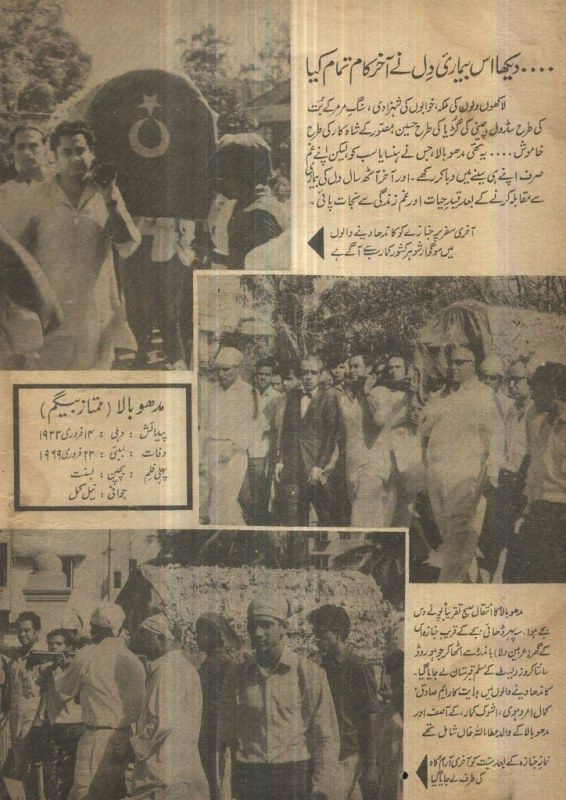
Glimpses from Madhubala’s final rites in which Kishore Kumar could be seen giving his shoulder to her coffin
Madhubala’s grave was carved in pure marble and bore ‘aayats’ from the Koran as well as verses which were dedicated to her memorial, and her father spent weeks at the graveyard, making sure the artisans crafted it well. [23]The Economic Times
- Reportedly, Madhubala’s and others’ grave in the Juhu Muslim Cemetery was demolished to create space for new burials. The cemetery included graves of several noted individuals including Naseem Bano, Ludhianvi, Naushad, Ali Sardar Jafri, Khwaja Ahmed Abbas, Jan Nisar Akhtar, Rafi, and Parveen Babi. In an interview, Asgar Ali, the president of the Muslim Majlis, a trust which manages the burial ground, talked about the demolition of graves and revealed that the graves were demolished to create an area for new burials and the construction of memorials to the dead was prohibited by Islamic law. Asgar Ali said,
Islamic law or Sharia does not permit the construction of memorials to the dead, Moreover, there is an acute shortage of space since the Muslim population in the area is expanding and everyone wants to be buried in our graveyard given how clean and high-profile it is. Poet Ali Sardar Jafri lived near Malabar Hill but he was brought here.” [24]The Economic Times
- In an interview, Madhur revealed that following Madhubala’s death, Dilip Kumar and his family went to the graveyard, but the burial had already taken place by then. She further said that for the next three days after Madhubala’s death, Dilip’s family sent them food. [25]Filmfare
- Stelios Kazantzidis, one of the prominent Greek singers, produced a Greek song titled ‘Mandoubala’ and dedicated it to Madhubala. He performed the song at the closing ceremonies of the 2004 Athens Olympics.
- In 2008, a commemorative postage stamp of Madhubala was released by the India Post.
- In 2010, Filmfare mentioned Madhubala’s performance as ‘Anarkali’ in the film ‘Mughal-e-Azam’ in its list of top ’80 Iconic Performances.’ [26]Tanqeed Mughal-e-Azam is considered to be one of the greatest films ever made in polls by the British Film Institute and News 18. [27]News 18
- On 10 August 2017, the New Delhi centre of Madame Tussauds unveiled Madhubala’s statue – inspired by her look in the film Mughal-E-Azam. Madhur Bhushan attended the event.
- In 2018, The New York Times, an American newspaper, published an obituary in ‘Overlooked’ about Madhubala in which they compared her life to Marilyn Monroe, an American actor. [28]The New York Times
- Reportedly, Madhubala’s entry in “Mughal-E-Aazam” was included in Rediff.com’s list of “20 scenes that took our breath away” by Sukanya Verma, an Indian journalist and film critic.
- On 14 February 2019, the search engine Google commemorated the legendary Madhubala with a doodle on her 86th birthday.
Google commented on the doodle and wrote,
While her breathtaking appearance earned comparisons to Venus, Madhubala was a gifted actor with an understated style well suited for comedies, dramas, and romantic roles alike. Appearing in over 70 films over the course of a tragically brief career, Madhubala “who would have turned 86 today” was called ‘The Biggest Star in the World’ in 1952 by Theatre Arts magazine.” [29]Google
- Madhubala, who had learnt to drive at the age of 12, had a collection of swanky cars which included Hillman, Buick, and Station Wagon. [30]Filmfare She liked to go for long drives sometimes.
- Madhubala used to wear a burqa, as she belonged to a conservative Muslim family.
- According to Madhur Bhushan, Madhubala loved wearing plain white sarees and adorning her hair with mogra, also known as Arabian Jasmine. [31]Filmfare
- In an interview, Madhur revealed that Madhubala had no friends and was not allowed to attend any premiers or functions. [32]Filmfare
- Frank Capra, an Italian-American film director, wanted to give Madhubala recognition at the international level by making her work in Hollywood; however, her father, Ataullah Khan, never allowed her to work in Hollywood.
- Madhubala, who was renowned for her beauty and kind heart, was known to be a generous donor. As per sources, in 1954, it came to light that Madhubala provided monthly bonuses to the lower staff of her studios. Moreover, in 1962, she gifted a camera crane to the Film and Television Institute of India (FTII).
- The film ‘Jwala’ (1971), was the only colour film that was released posthumously.
- According to sources, Madhubala had also worked in Tamil, Telugu, and Malayalam films.
- In an interview, Madhur Bhushan, Madhubala’s sister, described Madhubala as an emotional and cheerful person who could easily switch between laughter and tears. She revealed that when Madhubala started laughing, it would be difficult to get her to stop, and many times shooting had to be cancelled as a result. [33]Filmfare
- Some media sources claim that Madhubala had a childhood friend named Latif in Delhi, British India (now India) whom she gave a rose as a symbol of affection before leaving for Bombay (now Mumbai). Latif, who later became an IAS officer, kept the rose with him, and upon Madhubala’s demise, he put that rose on her grave. It is said that Latif visits Madhubala’s grave on 23 February every year. [34]The Dispatch
- Madhubala was bestowed with many titles including ‘The Venus of Indian Cinema,’ ‘The Marilyn Monroe of Bollywood,’ and ‘The Beauty With Tragedy.’
- Madhubala’s beauty was so renowned across the globe that many foreign magazines such as the American LIFE magazine showcased her beautiful photographs.
In addition, the ‘Theatre Arts’ journal dedicated an article to her glamour, featuring her picture in its August 1952 edition. This article titled “The Biggest Star in the World – and she’s not in Beverly Hills” bestowed upon her an additional title.
- Her allure captured the hearts of many actors, among whom were Pradeep Kumar and Bharat Bhushan, who had proposed to her.
- While remembering her; Dev Anand said that she liked to flirt and used to play one against the other out of innocence.
- Madhubala loved animals, especially dogs, and had kept 18 in her house.
References/Sources:

